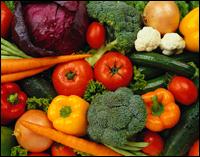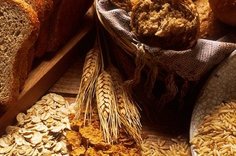A Diabetic's Healthy Eating Guide
It isn't always easy to know what to eat as a diabetic. It can be a daunting task to have to consistently test yourself using a glucose monitor when until recently, you may have had a much more casual interaction with the concept of blood sugar level management. Anxiety and frantic news reports can compound the matter as you struggle to find to find out with certainty what is good for you and what is bad for you. There are a few basic principles however, that have withstood the test of time and are indisputably good for health, not just for diabetics, but everyone.
Sometimes research and online websites can make it even more confusing. We don't always know which information is the best or the most reliable. It's easy to be inundated in a flood of information from countless sources and overwhelmed by it all.
In this article, I'll try to cover the sure bets in health: the time-tested and undisputed epitomes of health, rather than new trends, breakthroughs, or bold new studies.
Let's go over the safe bets. We have a lot on the line. :)
Sometimes research and online websites can make it even more confusing. We don't always know which information is the best or the most reliable. It's easy to be inundated in a flood of information from countless sources and overwhelmed by it all.
In this article, I'll try to cover the sure bets in health: the time-tested and undisputed epitomes of health, rather than new trends, breakthroughs, or bold new studies.
Let's go over the safe bets. We have a lot on the line. :)
Vegetables
Okay. We know vegetables are good, but which ones are the best? Firstly, a variety of vegetables is almost always a safe bet. Try to pick out an assortment of vegetables of varying color. This will give you incredibly well-rounded vegetable intake without many carbohydrates. Some vegetables contain more carbohydrates than others and in turn, some vegetables yield more benefits to your system and blood glucose level.
Non-starchy vegetables are the best for a diabetic, and are also typically high in fiber. Non-starchy vegetables have less carbohydrates than starchy vegetables like potatoes. Fiber is not only good for general health, but it also reduces your blood sugar level. The key importance of non-starchy vegetables is that anyone, even a diabetic can consume them until satisfied. It's also a good idea to keep a free glucose monitor handy to continuously measure how various foods affect your blood sugar.
Below is an incomplete list of non-starchy vegetables. There are surely many non-starchy vegetables that are not included in this list, but I have included most of the common and easily accessible choices. Also, I have not included vegetables that are "debatable" due to their starch or carbohydrate content. These are the safe bets:
Artichoke, asparagus, baby corn, bean sprouts, bok choy, broccoli, Brussels sprouts, cabbage, cauliflower, celery, cucumber, eggplant, green onions, jicama, leeks, onions, peppers, radishes, sauerkraut, spinach, tomatoes, turnips, zucchini.
Remember that canned vegetables are acceptable, but always make sure to check the labels that state that there is no salt, sodium or MSG included. Also consider the fat and salt content if the canned vegetables have sauce or soup included.
Non-starchy vegetables are the best for a diabetic, and are also typically high in fiber. Non-starchy vegetables have less carbohydrates than starchy vegetables like potatoes. Fiber is not only good for general health, but it also reduces your blood sugar level. The key importance of non-starchy vegetables is that anyone, even a diabetic can consume them until satisfied. It's also a good idea to keep a free glucose monitor handy to continuously measure how various foods affect your blood sugar.
Below is an incomplete list of non-starchy vegetables. There are surely many non-starchy vegetables that are not included in this list, but I have included most of the common and easily accessible choices. Also, I have not included vegetables that are "debatable" due to their starch or carbohydrate content. These are the safe bets:
Artichoke, asparagus, baby corn, bean sprouts, bok choy, broccoli, Brussels sprouts, cabbage, cauliflower, celery, cucumber, eggplant, green onions, jicama, leeks, onions, peppers, radishes, sauerkraut, spinach, tomatoes, turnips, zucchini.
Remember that canned vegetables are acceptable, but always make sure to check the labels that state that there is no salt, sodium or MSG included. Also consider the fat and salt content if the canned vegetables have sauce or soup included.
Fruits
Fruits, like vegetables are important for a diabetic diet. Also like vegetables, some fruits are much better for you than others, particularly when you are worried about your blood glucose levels.
Fruits that are relatively low in sugar are the best for a diabetic diet. Below is a list of the best fruits for a diabetic diet.
Apples, apricots, berries, cherries grapefruits, limes, oranges, pears.
Fruit juice is generally bad for a diabetic diet. Juices tend to have more sugar than their whole fruit counterparts, while lacking the organic fiber. Depending on the severity of your condition, it may be okay to eat higher sugar fruits or drink fruit juice in careful moderation, but only do so under the approval of your doctor and following his or her daily limits.
Fruits that are relatively low in sugar are the best for a diabetic diet. Below is a list of the best fruits for a diabetic diet.
Apples, apricots, berries, cherries grapefruits, limes, oranges, pears.
Fruit juice is generally bad for a diabetic diet. Juices tend to have more sugar than their whole fruit counterparts, while lacking the organic fiber. Depending on the severity of your condition, it may be okay to eat higher sugar fruits or drink fruit juice in careful moderation, but only do so under the approval of your doctor and following his or her daily limits.
Whole Grain Foods
Whole grain foods are extremely important to a diet designed to easily manage blood sugar levels. Whole grain foods are healthier because they retain much more of their natural nutrients than products made with processed flours. They are also typically very high in fiber, which we talked about earlier. Below are some examples of great whole grains to add to your healthy diet:
Brown rice (opposed to white rice), whole wheat breads (opposed to white breads), whole wheat cereals (low in sugar), whole wheat pasta (opposed to white pasta).
That list is may seem rather redundant, but some whole grain labeling practices can be ambiguous at best and shady and negligent at worst. Some products say “made with whole grains,” for example. That means that they are required to include a certain percentage of whole grain ingredients in their product. Standing in the grocery store aisle, you will probably have no idea what that percentage really is, so ignore those types of labels and skip right to the listed ingredients. If whole wheat flour, brown rice, etc. is at the top of the list, it is most likely a safe bet. It is also important to check for sugar content for whole grain products. If you check for whole wheat content and sugar content every time you purchase a product, you are in good shape.
Remember, that like healthy fruits, whole wheat products must be eaten in healthy amounts and spaced out throughout the day. Excessive consumption applies to even the healthiest of foods.
Brown rice (opposed to white rice), whole wheat breads (opposed to white breads), whole wheat cereals (low in sugar), whole wheat pasta (opposed to white pasta).
That list is may seem rather redundant, but some whole grain labeling practices can be ambiguous at best and shady and negligent at worst. Some products say “made with whole grains,” for example. That means that they are required to include a certain percentage of whole grain ingredients in their product. Standing in the grocery store aisle, you will probably have no idea what that percentage really is, so ignore those types of labels and skip right to the listed ingredients. If whole wheat flour, brown rice, etc. is at the top of the list, it is most likely a safe bet. It is also important to check for sugar content for whole grain products. If you check for whole wheat content and sugar content every time you purchase a product, you are in good shape.
Remember, that like healthy fruits, whole wheat products must be eaten in healthy amounts and spaced out throughout the day. Excessive consumption applies to even the healthiest of foods.
Other Tips
- Including fish in your meals up to three times a week is a healthy alternative to meat products. Remember however that eating too much fish can produce other health risks such as mercury poisoning. As with anything else, eat in moderation.
- Stay hydrated and limit or eliminate drinks containing sugar.
- Be careful with cooking products that contain fat. Use low-fat alternatives instead, such as olive oil.
- If you are a meat-eater, make sure to use lean cuts of meat such as loins or breasts. Remove the skin from poultry as it contains large amounts of fat.
- Live by routines. Eat consistent amounts at consistent times throughout the day.
- Watch your dairy products. Skim milk is a good alternative to regular milk. Consider the fat content in yogurts and cheeses.
- Always eat in moderation. Weight gain can occur even while eating only healthy foods.
- Walnuts are the healthiest nuts for a diabetic, followed by macadamia nuts.
- Test your blood glucose levels consistently and frequently. The better understanding you have of how your diet and activities affect your glucose levels, the easier it'll be to manage it and live a normal, healthy life.





